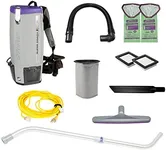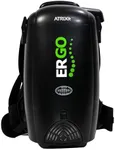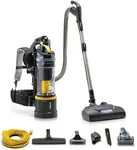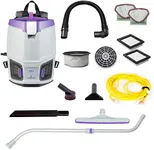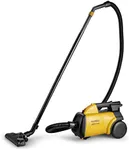Buying Guide for the Best Backpack Vacuum Cleaners
Choosing the right backpack vacuum cleaner can make a significant difference in your cleaning routine. These vacuum cleaners are designed to be worn on your back, allowing for greater mobility and ease of use, especially in large or hard-to-reach areas. When selecting a backpack vacuum cleaner, it's important to consider several key specifications to ensure you get the best fit for your needs. Understanding these specs will help you make an informed decision and find a vacuum that meets your cleaning requirements effectively.WeightWeight is a crucial factor because it directly affects how comfortable the vacuum cleaner will be to use. Backpack vacuums can range from lightweight models (around 10 pounds) to heavier ones (over 20 pounds). If you need to use the vacuum for extended periods or have physical limitations, a lighter model will be more comfortable. For heavy-duty cleaning where power is more important, a slightly heavier model might be acceptable.
Suction PowerSuction power determines how effectively the vacuum can pick up dirt and debris. This is usually measured in CFM (cubic feet per minute) or air watts. Higher suction power means better cleaning performance, especially on carpets and rugs. For general home use, moderate suction power is sufficient, but for commercial or heavy-duty cleaning, higher suction power is recommended.
CapacityCapacity refers to the size of the dust bag or canister. Larger capacities mean you can clean for longer without needing to empty the vacuum. Capacities can range from 1 to 10 liters. For home use, a smaller capacity is usually fine, but for commercial use or large areas, a larger capacity will be more convenient and efficient.
Filtration SystemThe filtration system is important for maintaining air quality and trapping allergens. HEPA filters are the gold standard, capturing 99.97% of particles as small as 0.3 microns. If you or anyone in your household has allergies or asthma, a vacuum with a HEPA filter is essential. For general use, a standard filter may suffice, but for environments requiring high air quality, opt for advanced filtration.
Noise LevelNoise level is measured in decibels (dB) and affects how comfortable the vacuum is to use, especially in noise-sensitive environments like offices or schools. Quieter models operate around 60-70 dB, while louder ones can exceed 80 dB. If you need to use the vacuum in a quiet setting, look for models with lower noise levels. For less noise-sensitive areas, this may be less of a concern.
Cord LengthCord length determines how far you can move from the power outlet without needing to switch plugs. Longer cords (over 50 feet) offer more flexibility and are ideal for large areas. For smaller spaces or homes, a shorter cord (around 30 feet) may be sufficient. Consider the size of the area you need to clean and choose a cord length that provides adequate reach.
Comfort and ErgonomicsComfort and ergonomics are about how the vacuum fits and feels when worn. Look for adjustable straps, padded back supports, and lightweight designs to ensure comfort during use. If you plan to use the vacuum for extended periods, these features are crucial to prevent strain and discomfort. Test different models if possible to find one that fits well and feels comfortable.
